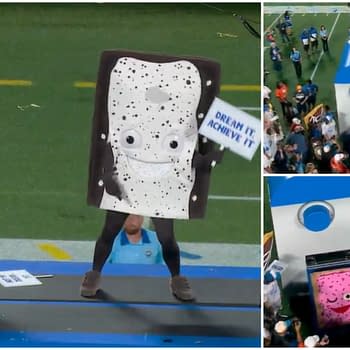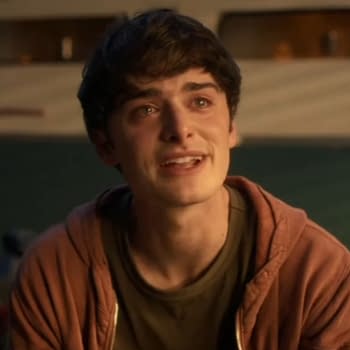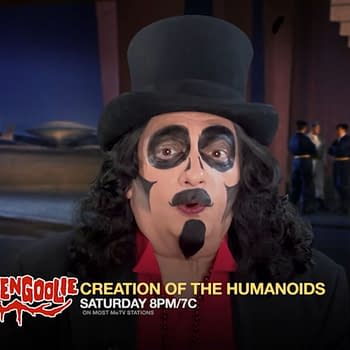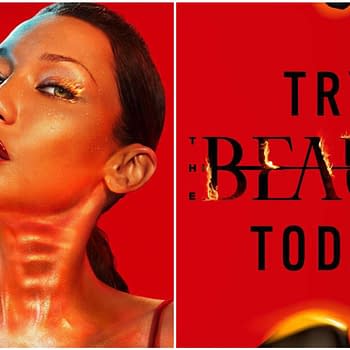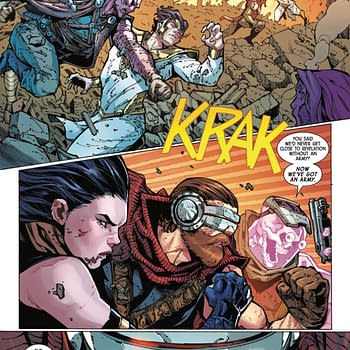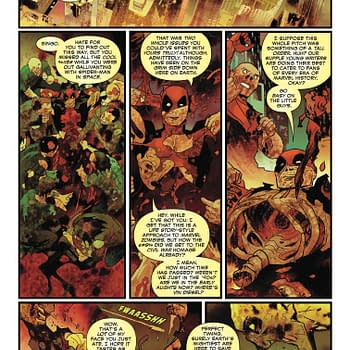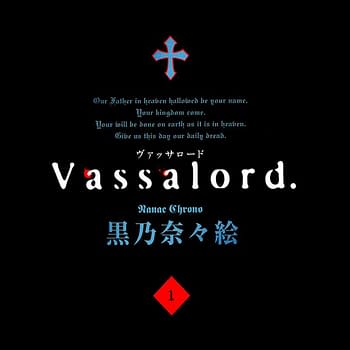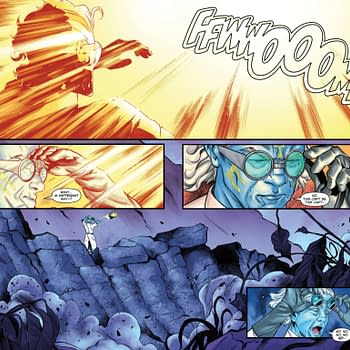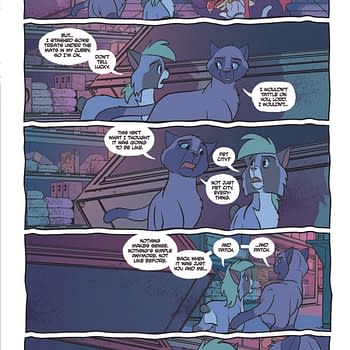Posted in: Comics, Comics Publishers, Conventions, Image, Recent Updates, san diego comic con | Tagged: comic books, Comics, HRL, image, image comics, san diego comic con, sdcc, sdcc 2017
Image Comics Celebrates Excellence In Storytelling at SDCC
Image Comics assembled some of the finest members of their writing and artist pool to talk storytelling and process at SDCC on Friday morning.
Bleeding Cool reporter Nick Kazden writes:
Image Comics assembled some of the finest members of their writing and artist pool to talk storytelling and the comic-making process at SDCC on Friday morning. After quickly running down each of the panelists and introducing the books they work on, moderator David Brothers — Image's branding manager — started asking specific process questions.
Marjorie Liu, the writer behind the smash hit Monstress, spoke about how her process is influenced by her time writing books:
"The one thing I always thought of as a novelist was that I have to create a really good first sentence […] that has to give you character, world and potential conflict."
She expanded that idea to comic books and tries to start each volume of the series with a striking image to draw readers in and compel them to turn the page. While the two images may appear to show women in difficult situations, Liu said the story is about the exact opposite.
"This is not a book about women losing their agency, this is the opposite," she said, explaining the fact that she is trying to subvert the "torture porn" themes prominent in a lot of fiction:
"She's a girl who is completely isolated by her own trauma, but what she doesn't realize is one of the ways to heal trauma is through friendship and community."
Nick Dragotta revealed that East of West is reaching its final 12 issues. Dragotta praised his partner-in-crime Jonathan Hickman, even though he acknowledges things may appear to go too far sometimes, like when Eden has a monster growing off his arm:
"Jonathan will just write stuff and I'll go 'you really want that? Well, I'm gonna give it to you!'"
He said that he receives a plot breakdown from Hickman, normally about three paragraphs, and then he works on breaking down the scenes. Most of the splash pages in the series have been due to the fact Dragotta considered it a good moment to emphasize with a splash page:
"At Image you have 28 pages of real estate, but at Marvel or DC you usually only have 20."
Greg Hinkle, the artist on Black Cloud, admitted that "this is the biggest panel I've ever spoken in front of," before going into his process. He said that most of the books he's worked on in the past have dense, "Alan Moore" scripts that tell him the angle the shot should be at and which details to include. But now he says writers Ivan Brandon and Jason Latour just give him the scripts and let him run wild. Pages that would normally be five to six panels he does in two or three.
"You gotta give me some boundaries here!" Hinkle joked.
Marc Bernadin, the author of Genius and co-host of Kevin Smith's Fatman on Batman podcast, said the team set out from the beginning knowing exactly what they wanted to present to the audience:
"One thing we wanted to do from the very beginning was to make it very clear the book is about a woman who is very justified in what she does, or at least in her own mind."
The pages displayed to the audience featured the title character killing cops in a bloody shootout and highlighted the importance of a strong hook. Bernadin described the art, beautifully done by Afua Richardson, as able to show us important information about the character:
"She's the antagonist of her own story, so by opening it with an act of violence against the sort of system that is meant to protect us, we thought it was a very provocative hook, but it's what the book's really about."
Amy Reeder, the artist on Rocket Girl, says she normally determines when to use a two page spread and how it will be laid out. Her art is full of concise panels that display a lot of information without ever feeling overcrowded.
"It's really important for me to let people know where they are in a space," she said.
When talking about a page that featured a some handcuffs, Reeder said she decided to buy a pair to use as a reference point. Instead of hitting a party store, she went to one of the many sex shops she said were littered her West Village neighborhood.
"I just want to know how they work in order to do that action and do it completely," Reeder explained.
"Best item to write off ever," Bernardin chimed in.
Dustin Nguyen, the artist on Descender, does pencils, inks and water colors for the sci-fi story. When designing a cover, he said that he tries to find his favorite point in the book and then get the emotional impact of that scene across.
While it may no longer be popular, he admitted that he "like[s] the old days where we had word bubbles on the cover."
He spoke highly of writer Jeff Lemire, who he said was about five or six issues ahead of him at any time. In his scripts, Lemire describes how the characters act and their personality, but how they move and look is left up to Nguyen:
"There's nothing I can improve on except maybe add some cool art."
And that's exactly what he does. A few different pages of his were put on display,, but one in particular stood out to me. It featured a red-colored page with an explosion as Tim hides in the corner. Nguyen said he literally through paint on the page and let it dry before he figured out where to plug he character and some of the rubble into the shot. His favorite part of the page, a wall behind Tim, he said was just a messy spot he was able to transform into something else.
The love between the artists was palpable. Hinkle, who on Black Cloud has a loose panel structure (the pages shown to the audience had two to three panels each), and Reeder — one page of hers was packed with ten panels — complimented each other's work and style. Dragotta jumped on the complimenting Reeder parade and said that her use of "clean shapes" helps make her books easily readable and that "she gets right to the important stuff."
"Aww, we're patting ourselves on the back here," joked Reeder.
While no one spoke ill about their experiences working with Marvel or DC, they all spoke highly about the artistic freedom Image provides them. Dragotta said that when he worked for the Big 2 he was constantly comparing himself to the greats like Jack Kirby and ultimately "felt like I couldn't measure up." It was only when he joined Image and started creating his own work did he "find himself as an artist."
"You feel like you don't have to compare yourself to anybody," Nguyen said, agreeing with Dragotta's points about creating their own images.












